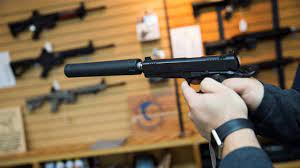
The NFA and Criminal Justice: Law Enforcement Perspectives
The National Firearms Act (NFA) of 1934 stands as being a crucial component of legislation in america, regulating the ownership, move, and production of specific firearms and components. Enacted in reaction to gangster-era violence, the NFA seeks to control the proliferation of weaponry regarded as particularly dangerous or unconventional. At its key, the NFA necessitates the sign up of firearms including device weapons, short-barreled rifles and shotguns, suppressors, and harmful products.
One of several principal demands of the NFA will be the signing up of protected firearms and units with the Bureau of Alcoholic drinks, Tobacco, Firearms and Explosives (ATF). This signing up method requires thorough background checks, fingerprinting, along with the syndication of comprehensive paperwork, which include photographs and particular forms. Additionally, each exchange of any NFA-governed object has to be authorized by the ATF, often resulting in significant wait occasions for possible proprietors.
Furthermore, the NFA imposes tough rules in the property and use of specific firearms and accessories. As an example, men and women must get acceptance from your ATF before carrying included firearms across status lines, and so they must hold the appropriate taxes stamp for each licensed piece inside their possession. Breakdown to comply with these rules may result in severe penalty charges, which includes fines and imprisonment.
Understanding the national firearms act is important for anybody enthusiastic about possessing or coping with firearms paid by its conditions. By implementing the NFA’s needs, men and women can understand the intricacies of firearm regulation while guaranteeing compliance with national law.